|
|
This chapter provides information on the Cisco 7000 series routers. The information is organized into the following sections:
http://www.cisco.com. For more information, see the chapter "Documentation" at the end of the catalog.
The Cisco 7000 series of multiprotocol routers includes the Cisco 7000 and the Cisco 7010. These routers combine Cisco Systems' proven software technology with exceptional reliability, availability, serviceability, and performance features to meet the requirements of today's most mission-critical internetworks. The Cisco 7000 series provides information system professionals with the flexibility they need to meet the constantly changing requirements at the core and distribution points of the internetwork. The Cisco 7000 series also provides a clear migration path to tomorrow's technologies.
Network interfaces reside on modular interface processors, which provide a direct connection between the high-speed Cisco Extended Bus (CxBus) and the external network. In a standard Cisco 7000 series router, route processing and switching are accomplished by the Route Processor (RP), Switch Processor (SP), and Silicon Switch Processor (SSP). In a Cisco 7000 series router upgraded to Cisco 7500 functionality, route processing and switching are accomplished by the 7000 Series Route Switch Processor (RSP7000)
The Cisco 7000 series runs the Cisco Internetwork Operating System (Cisco IOS) software, Cisco's industry-leading networking software. Cisco IOS software assures robust, reliable internetworks by supporting both LAN and WAN protocols, optimizing WAN services, and controlling internetwork access. In addition, Cisco IOS software allows centralized, integrated, and automated installation and management of internetworks.
The Cisco 7000 router provides five slots for interface processors; the Cisco 7010 router provides three slots for interface processors. Following are the interface processor types:

* Older versions of these boards may be eligible for the Investment Protection Program (IPP). See the chapter "Interface Processors for the Cisco 7000 Family."
**VIP2 requires an RSP7000.
The reliability, availability, and serviceability features of the Cisco 7000 series include the following:
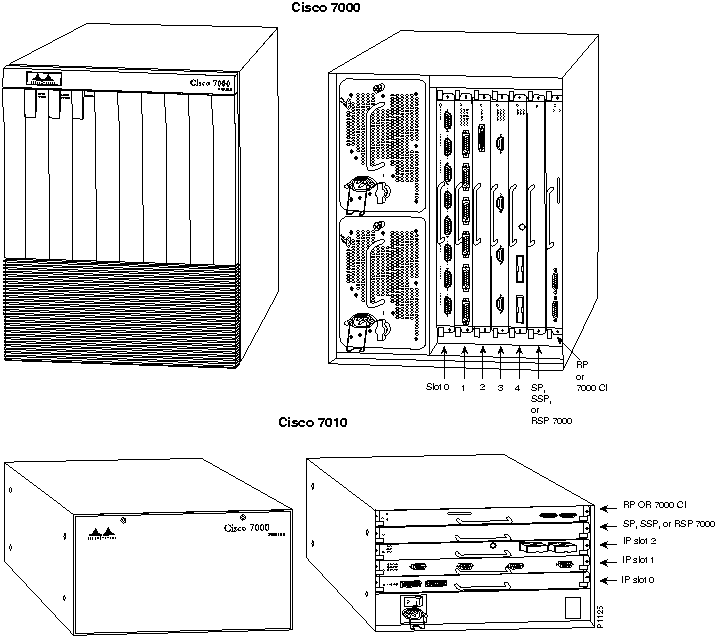
Table 72 : Cisco 7000 Series Summary of Features
| Characteristics | Cisco 7000 | Cisco 7010 |
|---|---|---|
| Supported network interfaces | Ethernet 10BaseT, AUI and 10BaseFL1
Fast Ethernet (100BaseT and MII) Token Ring FDDI HSSI Synchronous serial ATM Multichannel on T1 or E1 lines, ISDN PRI IBM channel |
Ethernet 10BaseT, AUI and 10BaseFL1
Fast Ethernet (100BaseT and MII) Token Ring FDDI HSSI Synchronous serial ATM Multichannel on T1 or E1 lines, ISDN PRI IBM channel |
| Power supplies | 2 | 1 |
| Interface processor slots | 5 | 3 |
| Software options---for Cisco IOS Release 11.1 and 11.0 2 | IP routing
IP/IPX Routing and IBM IP/IPX Routing, IBM, and APPN Desktop and IBM Enterprise and IBM Enterprise, IBM, and APPN |
IP routing
IP/IPX Routing and IBM IP/IPX Routing, IBM, and APPN Desktop and IBM Enterprise and IBM Enterprise, IBM, and APPN |
| Software options---for Cisco IOS Release 11.22 | IP routing
IP and basic VIP Desktop and IBM Desktop/IBM, and basic VIP Desktop/IBM and APPN Desktop/IBM, APPN, and basic VIP Enterprise Enterprise and basic VIP Enterprise and APPN Enterprise, APPN, and basic VIP |
IP routing
IP and basic VIP Desktop and IBM Desktop/IBM, and basic VIP Desktop/IBM and APPN Desktop/IBM, APPN, and basic VIP Enterprise Enterprise and basic VIP Enterprise and APPN Enterprise, APPN, and basic VIP |
| Onboard Flash memory | RP: 4 MB standard | RP: 4 MB standard |
| PCMCIA Flash memory card | RP: Optional 8 or 16 MB
RSP7000: 8 MB expandable to 40 MB (8, 16, or 20 MBs per card), 2 slots available |
RP: Optional 8 or 16 MB
RSP7000: 8 MB expandable to 40 MB (8, 16, or 20 MBs per card), 2 slots available |
| Processor type | RP: 25-MHz 68040 CPU, 16-MB RAM, 64-MB option available
RSP7000: MIPS RISC |
RP: 25-MHz 68040 CPU, 16-MB RAM, 64-MB option available
RSP7000: MIPS RISC |
| Dimensions (H x W x D) | 19.25 x 17.5 x 24.1"
(48.9 x 44.45 x 61.34 cm) |
10.5 x 17.5 x 17"
(26.67 x 44.45 x 43.18 cm) |
| Weight (average shipping) | ~149 lb (~67.6 kg) with 5 interface processors and 2 power supplies | ~83 lb (~37.65 kg) with 3 interface processors and 1 power supply |
Table 73 : Cisco 7000 Series Environmental Specifications
| Description | Cisco 7000 | Cisco 7010 |
|---|---|---|
| AC-input power supplies | 700W (2380 Btu/hour) | 600W (2040 Btu/hour) |
| DC-input power supplies | 1000W input requirement
700W power output 300W (1024 Btu/hr) heat dissipation 20A (-48 VDC) |
800W input requirement
600W power output 300W (1024 Btu/hr) heat dissipation 18A (-40 VDC) |
| Input | 100 to 240 VAC autoranging | 100 to 240 VAC autoranging |
| Frequency | 50 to 60 Hz autoranging | 50 to 60 Hz autoranging |
| AC current rating | 12A @ 100V; 6A @ 240V | 9A @ 100V; 4A @ 240V |
| Airflow | 140 cfm through the system blower | Side-to-side through chassis by variable-speed, 6-fan array |
| Radiated acoustic noise | 62 dBa | 47 dBa |
| Operating temperature | 32 to 104°F (0 to 40°C) | 32 to 104°F (0 to 40°C) |
| Nonoperating temperature range | --40 to 185°F (--40 to 85°C) | --4 to 149°F (--20 to 65°C) |

The Cisco 7000 series base system includes the following standard features:
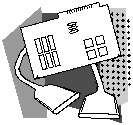
Options for the Cisco 7000 series include processors, interface processors, serial cables, software features, software feature licenses, memory, a second power supply (Cisco 7000 only), and accessories.
If a product number ends with an equal sign (=), the item can be ordered only as a spare. If a product number does not end with an equal sign, the item can be ordered as a spare or as a configurable part of a system order.
The standard system requires one Route Processor and one Switch Processor. An upgraded RSP7000 system requires one Route Switch Processor (RSP7000) and one chassis interface (RSP7000CI). Most processors can be ordered in three ways: as part of an initial system, as spares, or as upgrades. The product numbers are listed in Table 74.
Table 74 : Cisco 7000 Series Processor Boards
| Description | Product Number |
|---|---|
| Route Processor (installed in a system) | RP |
| Route Processor (spare) | RP= |
| Route Processor with 64-MB RAM (installed in a system) | RP-64MB |
| Route Processor with 64-MB RAM (spare) | RP-64MB= |
| Switch Processor (installed in a system) | SP |
| Switch Processor (spare) | SP= |
| Silicon Switch Processor with 512 KB of packet memory1 (installed in a system) | SSP |
| Silicon Switch Processor with 512 KB of packet memory (spare) | SSP= |
| Silicon Switch Processor with 2 MB of packet memory2 (installed in a system) | SSP-2MB |
| Silicon Switch Processor with 2 MB of packet memory2 (spare) | SSP-2MB= |
| Upgrade from RP to RP-64MB3 | RP-64MB-U |
| Upgrade from SP to SSP3 | UPG-SSP |
| 7000 Series Route Switch Processor (installed in system)4 | RSP70005 |
| 7000 Series Chassis Interface (installed in system)4 | RSP7000CI |
| Upgrade from SP to SSP-2MB3 | UPG-SSP-2MB |
| Upgrade from SSP to SSP-2MB3 | UPS-SSP-.5to2MB |
| Upgrade kit for both RP and SP | UPG-RSP7000=5 |
Cisco offers the RSP7000, which is available as an upgrade kit for the installed base of Cisco 7000 and 7010 systems. The RSP7000 significantly increases the performance for most features and protocols and provides a migration path that enables Cisco 7000 and 7010 systems to take advantage of advanced VIP features.
The RSP7000 upgrade consists of the following:
These software licenses and boards replace existing Cisco 7000 software licenses, RP boards, and SP/SSP boards, all of which are returned to Cisco for a credit.
Figure 10 : RSP7000 Processor Board
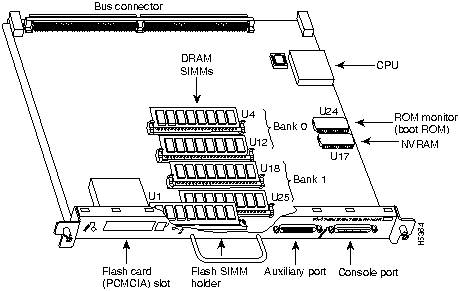
Figure 11 : RSP7000CI Chassis Interface Board

The following figures (Figure 12 and Figure 13) show Cisco 7000 series routers after installation of the RSP7000 upgrade kit. Note that each upgrade must also include an RSP software license.
Figure 12 : Cisco 7000 with RSP7000 and RSP7000CI Installed
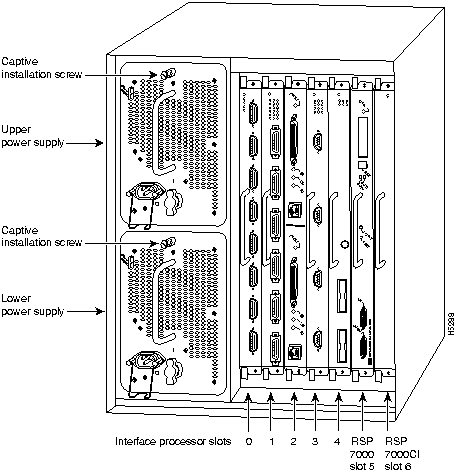
Figure 13 : Cisco 7010 with RSP7000 and RSP7000CI Installed
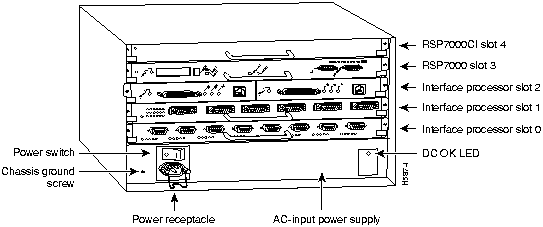
The RSP7000 has the same interface processor compatibility requirements as the Cisco 7500 series router, or more specifically, the RSP1 and RSP2. To determine if your interface processor boards are compatible with the RSP7000, see "Verifying Interface Processor Compatibility" in the chapter "Configuration Guidelines for the Cisco 7000 Family." Cisco offers a program to upgrade noncompatible Cisco 7500 series interface processor boards. If needed, refer to "Investment Protection Program" in the chapter "Interface Processors and Port Adapters for the Cisco 7000 Family."
When you order the upgrade kit, specify the following:
A Flash memory card allows you to download a software image into Flash memory, save backup software images, and copy files. Flash memory card options depend on the processor (RP or RSP7000) installed in your router.
The RP requires a PCMCIA Flash memory card for Cisco IOS Release 11.0 or later. The card allows you to download Release 11.0 into Flash memory, save backup software images, and copy files. Table 75 lists RP Flash memory card product numbers and descriptions.
Table 75 : Cisco 7000 Series RP Flash Memory Cards
| Description | Product Number |
|---|---|
| 8-MB Flash memory card with sleeve (installed in system) | MEM-RP-FLC8M |
| 8-MB Flash memory card with sleeve (spare) | MEM-RP-FLC8M= |
| 16-MB Flash memory card with sleeve (installed in system) | MEM-RP-FLC16M |
| 16-MB Flash memory card with metal sleeve (spare) | MEM-RP-FLC16M= |
The Flash memory card inserts into the PCMICA slot on the RP board. The following purchase scenarios explain how to use the Cisco 7000 series router Flash memory card:
In an RSP7000 system, Flash memory cards can be used to store and boot Cisco IOS images and/or system configurations. An RSP7000 system can also be used as a TFTP server, with the Flash memory used to store other files such as software and microcode images for other systems. Cisco recommends using one card for image storage, and another for configurations. The number of system images that can be stored on the card depends both on the Flash memory card size and the file size.
The RSP7000 Flash memory card is available in 8-, 16-, or 20-MB densities. The card is an Intel Series 2+ Flash memory card, which conforms with the PCMCIA format. The Flash memory card that is shipped with the RSP7000 contains a software image; the same Flash memory card that is ordered as a spare is shipped blank and must be formatted before use. Table 76 lists RSP7000 Flash memory card product numbers and descriptions.
Table 76 : Cisco 7000 Series RSP7000 Flash Memory Cards
| Description | Product Number |
|---|---|
| 8-MB Flash memory card (default, shipped with RSP7000) | MEM-RSP-FLC8M |
| 8-MB Flash memory card (spare) | MEM-RSP-FLC8M=1 |
| 16-MB Flash memory card (installed in system) | MEM-RSP-FLC16M |
| 16-MB Flash memory card (spare) | MEM-RSP-FLC16M=1 |
| 20-MB Flash memory card (installed in system) | MEM-RSP-FLC20M |
| 20-MB Flash memory card (spare) | MEM-RSP-FLC20M=1 |
Be default, the RSP7000 is shipped with 16 MB of DRAM. Table 77 describes additional memory options. For configuration information, see the section "DRAM Guidelines" in the chapter "Configuration Guidelines for the Cisco 7000 Family."
Table 77 : Cisco 7000 Series RSP DRAM s
| Description | Product Numbers | SIMM Quantity | SIMM Size |
|---|---|---|---|
| 8-MB DRAM (spare) | MEM-RSP-8M= | 2 | 4-MB SIMMs |
| 16-MB DRAM (spare) | MEM-RSP-16M= | 2 | 8-MB SIMMs |
| 32-MB DRAM (installed in system) | MEM-RSP-32M | 2 | 16-MB SIMMs |
| 32-MB DRAM (spare) | MEM-RSP-32M= | 2 | 16-MB SIMMs |
| 64-MB DRAM (installed in system) | MEM-RSP-64M | 2 | 32-MB SIMMs |
| 64-MB DRAM (spare) | MEM-RSP-64M= | 2 | 32-MB SIMMs |
| 128-MB DRAM (installed in system) | MEM-RSP-128M | 4 | 32-MB SIMMs |
| 128-MB DRAM (spare) | MEM-RSP-128M= | 4 | 32-MB SIMMs |
Interface processors for the Cisco 7000 series are described in the chapter "Interface Processors and Port Adapters for the Cisco 7000 Family."
Table 78 lists spare chassis assemblies.
Table 78 : Cisco 7000 Series Chassis Assemblies
| System1 | Product Number |
|---|---|
| Cisco 7000 and AC-input power supply. Includes blower, rack-mount kit, and cable management bracket. | CHAS-7000= |
| Cisco 7010 and AC-input power supply. Includes blower, rack-mount kit, and cable management bracket. | CHAS-7010= |
| Cisco 7000 and DC-input power supply. Includes blower and rack-mount kit. | CHAS-7000-DC= |
| Cisco 7010 and DC-input power supply. Includes blower and rack-mount kit. | CHAS-7010-DC= |
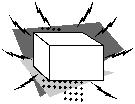
Table 79 provides product numbers for single power supplies ordered as part of an initial system.
Table 79 : Cisco 7000 Series Single Power Supplies
| Description | Product Number |
|---|---|
| Cisco 7000 AC-input power supply (default)1 | PWR/7 |
| Cisco 7010 AC-input power supply (default)2 | PWR/5 |
| Cisco 7000 DC-input power supply1, 3 | PWR/7-DC |
| Cisco 7010 DC-input power supply2, 3 | PWR/5-DC |
The Cisco 7000 supports dual power supplies. (This option is not available for the Cisco 7010.) The optional additional power supply system provides dual load-sharing for protection against system interruption in the event that one power supply system or one source of power fails. Table 80 provides product numbers for dual power supplies.
Table 80 : Cisco 7000 Dual Power Supplies
| Description | Product Numbers |
|---|---|
| Redundant AC-input power supply (installed in system) | PWR/7/21 |
| Redundant DC-input power supply (installed in system)2 | PWR/7/2DC1 |
When you order an AC-input power supply as a spare, choose the appropriate product numbers to specify the type of power cord to be included in the order. Table 81 provides the spare power supply product numbers. Note that the Cisco 7000 power supply is the same as the Cisco 7507 power supply; the Cisco 7010 power supply is the same as the Cisco 7505 power supply.
Table 81 : Cisco 7000 Series Spare AC-input Power Supply
Product Numbers
| System | Country | Product Number |
|---|---|---|
| Cisco 7000 | Australia | PWR/7-ACA= |
| Europe | PWR/7-ACE= | |
| Italy | PWR/7-ACI= | |
| United Kingdom | PWR/7-ACU= | |
| USA | PWR/7-AC= | |
| Cisco 7010 | Australia | PWR/5-ACA= |
| Europe | PWR/5-ACE= | |
| Italy | PWR/5-ACI= | |
| United Kingdom | PWR/5-ACU= | |
| USA | PWR/5-AC= |
Spare fans and filters for the Cisco 7000 series are listed in Table 82.
Table 82 : Cisco 7000 Series Spare Fans and Filters
| Fans | Power | Systems | Product Number |
|---|---|---|---|
| Blower assembly kit
Fan tray assembly |
All
All |
Cisco 7000
Cisco 7010 |
MAS/7-FAN=
MAS/5-FAN= |
| Air filter | -- | Cisco 7000 | ACS/7-FILTER= |
Several spare accessories are available for the Cisco 7000 series, including a rack-mount kit and the following spares: LED board, panel, arbiter, air filter, and blank carrier. Table 83 lists the Cisco 7000 series spare accessories.
Table 83 : Cisco 7000 Series Accessories
| Product | Description | Cisco 7000
Product Number |
Cisco 7010
Product Number |
|---|---|---|---|
| Rack-mount kit | Standard EIA 19-inch rack-mount kit | ACS-RMK= | ACS/5-RMK= |
| Cable system | Cable management system | -- | ACS/5-CBLM= |
| LED board | The LED board provides system status indications | MAS-7000LED= | -- |
| Spare packaging | Spare packaging material | PKG-7000= | PKG-7010= |
| Fan assembly | Fan or blower assembly | MAS-7000FAN= | MAS-7010FAN= |
| Air filter | Air filter for fan assembly | ACS/7-FILTER= | -- |
| Blank carrier | Blank carrier for empty chassis slots1 | MAS-7KBLANK= | MAS-7KBLANK= |
Cisco IOS software feature sets are available for Cisco 7000 series routers. With feature sets, you can order software combinations that support your particular application. Optional licenses expand the feature sets by providing WAN packet protocol and interdomain routing. To order, select one feature set (there is no default) and one or both of the optional feature licenses.

With the introduction of Cisco IOS Release 11.2, feature sets have been updated to make it easier to select the exact feature sets you need. Feature sets names are simplified and are more consistent across Cisco hardware platforms. In addition, you can add options to the standard feature set offerings. These options provide additional features and value based on the hardware platform selected. Cisco also continues to offer specialized feature sets for key applications.
The Cisco 7000 series offers the following type of feature sets:
The new feature set tables use the following conventions to identify features:
Table 84 lists the Cisco IOS Release 11.2, 11.1, and 11.0 feature sets; Table 85 lists feature set product numbers; Table 86 lists feature set licenses; and Table 87 lists feature set upgrade product numbers.
You can still order earlier Cisco IOS software releases that are available as software feature sets. Unless you specify otherwise, you will receive the default software version.
Table 84 : Cisco IOS Release 11.2, 11.1, and 11.0 Feature Sets---Cisco 7000 Series
| Cisco 7000 Series Feature Sets | |||||||||||
|---|---|---|---|---|---|---|---|---|---|---|---|
| Features | IP Routing | IP/IPX/IBM1 | Desktop/IBM2 | Enterprise2 | |||||||
| Cisco IOS Release | 11.2 | 11.1 | 11.0 | 11.1 | 11.0 | 11.2 | 11.1 | 11.0 | 11.2 | 11.1 | 11.0 |
| LAN Support | |||||||||||
| Apollo Domain | -- | -- | -- | -- | -- | -- | -- | -- | X | X | X |
| AppleTalk 1 and 23 | -- | -- | -- | -- | -- | X | X | X | X | X | X |
| Banyan VINES | -- | -- | -- | -- | -- | -- | -- | -- | X | X | X |
| Concurrent routing and bridging4 | X | X | X | X | X | X | X | X | X | X | X |
| DECnet IV | -- | -- | -- | -- | -- | X | X | X | X | X | X |
| DECnet V | -- | -- | -- | -- | -- | -- | -- | -- | X | X | X |
| GRE | X | X | X | X | X | X | X | X | X | X | X |
| IP | X | X | X | X | X | X | X | X | X | X | X |
| LAN extension host | X | X | X | X | X | X | X | X | X | X | X |
| Multiring | X | X | X | X | X | X | X | X | X | X | X |
| Novell IPX5 | -- | -- | -- | X | X | X | X | X | X | X | X |
| OSI | -- | -- | -- | -- | -- | -- | -- | -- | X | X | X |
| Transparent and translational bridging6 | X | X | X | X | X | X | X | X | X | X | X |
| XNS | -- | -- | -- | -- | -- | -- | -- | -- | X | X | X |
| WAN Services | |||||||||||
| ATM LAN emulation: DECnet routing and Banyan VINES support | X | -- | -- | -- | -- | X | -- | -- | X | -- | -- |
| ATM LAN emulation: Hot Standby Router Protocol (HSRP) and
Simple Server Redundancy Protocol (SSRP) |
X | -- | -- | -- | -- | X | -- | -- | X | -- | -- |
| ATM LAN emulation: Rate queues for SVC per subinterface | X | -- | -- | -- | -- | X | -- | -- | X | -- | -- |
| ATM LAN emulation: UNI 3.1 signaling for ATM | X | -- | -- | -- | -- | X | -- | -- | X | -- | -- |
| Combinet Packet Protocol (CPP) | X | -- | -- | -- | -- | X | -- | -- | X | -- | -- |
| Dialer profiles | X | -- | -- | -- | -- | X | -- | -- | X | -- | -- |
| Half bridge/half router for CPP and PPP | X | -- | -- | -- | -- | X | -- | -- | X | -- | -- |
| HDLC | X | X | X | X | X | X | X | X | X | X | X |
| IPXWAN 2.0 | -- | -- | -- | X | X | X | X | X | X | X | X |
| ISDN7 | X | X | X | X | X | X | X | X | X | X | X |
| Multichassis Multilink PPP (MMP) | -- | -- | -- | -- | -- | -- | -- | -- | X | -- | -- |
| PPP8 | X | X | X | X | X | X | X | X | X | X | X |
| Virtual Private Dial-up Network (VPDN) | -- | -- | -- | -- | -- | X | -- | -- | X | -- | -- |
| WAN Optimization | |||||||||||
| Bandwidth-on-demand | X | X | X | X | X | X | X | X | X | X | X |
| Custom and priority queuing9 | X | X | X | X | X | X | X | X | X | X | X |
| Dial backup | X | X | X | X | X | X | X | X | X | X | X |
| Dial-on-demand | X | X | X | X | X | X | X | X | X | X | X |
| Header10, link and payload compression11 | X | X | X | X | X | X | X | X | X | X | X |
| NetFlow Switching (NFS)12 | X | -- | -- | -- | -- | X | -- | -- | X | -- | -- |
| Snapshot routing | X | X | X | X | X | X | X | X | X | X | X |
| Weighted fair queuing9 | X | X | X | X | X | X | X | X | X | X | X |
| IP Routing | |||||||||||
| Enhanced IGRP | X | X | X | X | X | X | X | X | X | X | X |
| Enhanced IGRP Optimizations | X | -- | -- | -- | -- | X | -- | -- | X | -- | -- |
| ES-IS | -- | -- | -- | -- | -- | -- | -- | -- | X | X | X |
| IGRP | X | X | X | X | X | X | X | X | X | X | X |
| IS-IS | -- | -- | -- | -- | -- | -- | -- | -- | X | X | X |
| Named IP Access Control List13 | X | -- | -- | -- | -- | X | -- | -- | X | -- | -- |
| Network Address Translation (NAT)14 | X | -- | -- | -- | -- | X | -- | -- | X | -- | -- |
| NHRP | X | X | X | X | X | X | X | X | X | X | X |
| On Demand Routing (ODR) | X | -- | -- | -- | -- | X | -- | -- | X | -- | -- |
| OSPF | X | X | X | X | X | X | X | X | X | X | X |
| OSPF Not-So-Stubby-Areas (NSSA) | X | -- | -- | -- | -- | X | -- | -- | X | -- | -- |
| OSPF On Demand Circuit (RFC 1793) | X | -- | -- | -- | -- | X | -- | -- | X | -- | -- |
| PIM | X | X | X | X | X | X | X | X | X | X | X |
| Policy-based routing | X | X | X | X | X | X | X | X | X | X | X |
| RIP | X | X | X | X | X | X | X | X | X | X | X |
| RIP Version 2 | X | X | -- | X | -- | X | X | -- | X | X | -- |
| Other Routing | |||||||||||
| AURP | -- | -- | -- | -- | -- | X | X | X | X | X | X |
| IPX RIP | -- | -- | -- | X | X | X | X | X | X | X | X |
| NLSP | -- | -- | -- | X | X | X | X | X | X | X | X |
| RTMP | -- | -- | -- | -- | -- | X | X | X | X | X | X |
| SMRP | -- | -- | -- | -- | -- | X | X | X | X | X | X |
| SRTP | -- | -- | -- | -- | -- | -- | -- | -- | X | X | X |
| Multimedia and Quality of Service | |||||||||||
| Generic traffic shaping | X | -- | -- | -- | -- | X | -- | -- | X | -- | -- |
| Random Early Detection (RED) | X | -- | -- | -- | -- | X | -- | -- | X | -- | -- |
| Resource Reservation Protocol (RSVP) | X | -- | -- | -- | -- | X | -- | -- | X | -- | -- |
| Management | |||||||||||
| AutoInstall | X | X | X | X | X | X | X | X | X | X | X |
| Automatic modem configuration15 | X | X | -- | X | -- | X | X | -- | X | X | -- |
| HTTP Server | X | -- | -- | -- | -- | X | -- | -- | X | -- | -- |
| RMON events and alarms | X | X | -- | X | -- | X | X | -- | X | X | -- |
| SNMP | X | X | X | X | X | X | X | X | X | X | X |
| Telnet | X | X | X | X | X | X | X | X | X | X | X |
| Security | |||||||||||
| Access lists | X | X | X | X | X | X | X | X | X | X | X |
| Access security | X | X | X | X | X | X | X | X | X | X | X |
| Extended access lists | X | X | X | X | X | X | X | X | X | X | X |
| Kerberized login | -- | -- | -- | -- | -- | -- | -- | -- | X | X | -- |
| Kerberos V client support | -- | -- | -- | -- | -- | -- | -- | -- | X | -- | -- |
| Lock and Key | X | X | -- | X | -- | X | X | -- | X | X | -- |
| MD5 routing authentication | X | X | X | X | X | X | X | X | X | X | X |
| RADIUS | X | X | -- | X | -- | X | X | -- | X | X | -- |
| TACACS+16 | X | X | X | X | X | X | X | X | X | X | X |
| IBM Support | |||||||||||
| APPN (optional)2 | -- | -- | -- | X | X | X | -- | -- | X | X | X |
| BAN for SNA Frame Relay support | -- | -- | -- | X | -- | X | X | -- | X | X | -- |
| Caching and filtering | -- | -- | -- | X | X | X | X | X | X | X | X |
| DLSW+17, 18 | -- | -- | -- | X | X | X | X | X | X | X | X |
| Downstream PU concentration (DSPU) | -- | -- | -- | -- | -- | -- | -- | -- | X | X | X |
| Frame Relay SNA support (RFC 1490) | -- | -- | -- | X | X | X | X | X | X | X | X |
| Native Client Interface Architecture (NCIA) Server | -- | -- | -- | -- | -- | X | -- | -- | X | -- | -- |
| NetView Native Service Point | -- | -- | -- | X | X | X | X | X | X | X | X |
| QLLC | -- | -- | -- | X | X | X | X | X | X | X | X |
| Response Time Reporter (RTR) | -- | -- | -- | -- | -- | X | -- | -- | X | -- | -- |
| SDLC integration | -- | -- | -- | X | X | X | X | X | X | X | X |
| SDLC transport (STUN) | -- | -- | -- | X | X | X | X | X | X | X | X |
| SDLC-to-LAN conversion (SDLLC) | -- | -- | -- | X | X | X | X | X | X | X | X |
| SNA and NetBIOS WAN optimization via local acknowledgment | -- | -- | -- | X | X | X | X | X | X | X | X |
| SRB/RSRB19 | -- | -- | -- | X | X | X | X | X | X | X | X |
| SRT | -- | -- | -- | X | X | X | X | X | X | X | X |
| TG/COS | -- | -- | -- | -- | -- | -- | -- | -- | X | X | X |
| TN3270 Server (CIP2 only) | -- | -- | -- | -- | -- | X | -- | -- | X | -- | -- |
| VIP and HSA | |||||||||||
| VIP | X | X | -- | X | -- | X | X | -- | X | X | -- |
| VIP220 | X | X | -- | X | -- | X | X | -- | X | X | -- |
Table 85 : Cisco IOS Software Product Numbers---Cisco 7000 Series
| Description | Cisco IOS
Release 11.2 |
Cisco IOS
Release 11.1 |
Cisco IOS
Release 11.0 |
|---|---|---|---|
| RP systems | |||
| Enterprise | SW7A-11.2.x1
SW7A-11.2.x= SR7A-11.2.x= |
SW-G7A-11.1.x1
SWR-G7A-11.1.x= |
SW-G7A-11.0.x1
SWR-G7A-11.0.x= |
| Enterprise, VIP | SW7AV-11.2.x=
SR7AV-11.2.x= |
SW-G7AV-11.1.x
SWR-G7AV-11.1.x= |
-- |
| Enterprise, APPN | SW7AN-11.2.x
SW7AN-11.2.x= SR7AN-11.2.x= |
SW-G7AN-11.1.x
SWR-G7AN-11.1.x= |
SW-G7AN-11.0.x
SWR-G7AN-11.0.x= |
| Enterprise, APPN, VIP | SW7ANV-11.2.x=
SR7ANV-11.2.x= |
SW-G7ANV-11.1.x
SWR-G7ANV-11.1.x= |
-- |
| Desktop, IBM | SW7BS-11.2.1
SW7BS-11.2.1= SR7BS-11.2.1= |
SW-G7BS-11.1.x
SWR-G7BS-11.1.x= |
SW-G7BS-11.0.x
SWR-G7BS-11.0.x= |
| Desktop, IBM, VIP | SW7BSV-11.2.1=
SR7BSV-11.2.1= |
SW-G7BSV-11.1.x
SWR-G7BSV-11.1.x= |
-- |
| Desktop, IBM, APPN | SW7BSN-11.2.1
SW7BSN-11.2.1= SR7BSN-11.2.1= |
-- | -- |
| Desktop, IBM, APPN, VIP | SW7BSNV-11.2.1=
SR7BSNV-11.2.1= |
-- | -- |
| IP/IPX, IBM2 | -- | SW-G7DS-11.1.x
SWR-G7DS-11.1.x= |
SW-G7DS-11.0.x
SWR-G7DS-11.0.x= |
| IP/IPX, IBM, VIP2 | -- | SW-G7DSV-11.1.x
SWR-G7DSV-11.1.x= |
-- |
| IP/IPX, IBM, APPN2 | -- | SW-G7DSN-11.1.x
SWR-G7DSN-11.1.x= |
SW-G7DSN-11.0.x
SWR-G7DSN-11.0.x= |
| IP/IPX, IBM, APPN, VIP2 | -- | SW-G7DSNV-11.1.x
SWR-G7DSNV-11.1.x= |
-- |
| IP only | SW7C-11.2.x
SW7C-11.2.x= SR7C-11.2.x= |
SW-G7C-11.1.x
SWR-G7C-11.1.x= |
SW-G7C-11.0.x
SWR-G7C-11.0.x= |
| IP, VIP | SW7CV-11.2.x=
SR7CV-11.2.x= |
SW-G7CV-11.1.x
SWR-G7CV-11.1.x= |
-- |
| RSP systems | |||
| Enterprise | SF75A--11.2.x
SW75A-11.2.x= |
SF-G75A-11.1.x
SW-G75A-11.1.x= |
SF-G75A-11.0.x
SW-G75A-11.0.x= |
| Enterprise, VIP/VIP23 | SF75A--11.2.x
SW75A-11.2.x= |
SF-G75AV-11.1.x | -- |
| Enterprise, APPN4 | SF75AN-11.2.x
SW75AN-11.2.x= |
SF-G75AN-11.1.x
SW-G75AN-11.1.x= |
SF-G75AN-11.0.x
SW-G75AN-11.0.x= |
| Enterprise, APPN, VIP/VIP23 | SF75AN-11.2.x
SW75AN-11.2.x= |
SF-G75ANV-11.1.x | -- |
| Desktop, IBM | SF75BS-11.2.x
SW75BS-11.2.x= |
SF-G75BS-11.1.x
SW-G75BS-11.1.x= |
SF-G75BS-11.0.x
SW-G75BS-11.0.x= |
| Desktop, IBM, VIP/VIP23 | SF75BS-11.2.x
SW75BS-11.2.x= |
SF-G75BSV-11.1.x | -- |
| Desktop, IBM, APPN, VIP/VIP23 | SF75BSN-11.2.x | -- | -- |
| IP/IPX, IBM2 | -- | SF-G75DS-11.1.x
SW-G75DS-11.1.x= |
SF-G75DS-11.0.x
SW-G75DS-11.0.x= |
| IP/IPX, IBM, VIP/VIP22,3 | -- | SF-G75DSV-11.1.x | -- |
| IP/IPX, IBM, APPN2,3 | -- | SF-G75DSN-11.1.x
SW-G75DSN-11.1.x= |
SF-G75DSN-11.0.x
SW-G75DSN-11.0.x= |
| IP/IPX, IBM, APPN, VIP/VIP22,3 | -- | SF-G75DSNV-11.1.x | -- |
| IP only | SF75C-11.2.x
SW75C-11.2.x= |
SF-G75C-11.1.x
SW-G75C-11.1.x= |
SF-G75C-11.0.x
SW-G75C-11.0.x= |
| IP, VIP/VIP23 | SF75C-11.2.x | SF-G75CV-11.1.x | -- |
Table 86 : Cisco IOS Software Feature Licenses---Cisco 7000 Series
| Category | Features | Product Number |
|---|---|---|
| RP | ||
| WAN packet protocols | X.25, X.25 switching, Switched 56, Frame Relay, Frame Relay switching, SMDS, ATM DXI, SMDS over ATM
In Cisco IOS Release 11.2 only: all of the above plus Frame Relay SVC support (DTE) and Frame Relay traffic shaping |
FR-WPP7
FR-WPP7= |
| Interdomain routing1 | BGP, EGP for Internet scale routing
In Cisco IOS Release 11.2 only: all of the above plus BGP42 |
FR-IR7
FR-IR7= |
| VIP/VIP2 support | Included automatically with VIP order | -- |
| CIP2 support3 | TCP/IP offload feature for CIP (or CIP2) | FR-CIP-TCPOFF
FR-CIP-TCPOFF= |
| SNA support feature for CIP2 SNA | FR-CIP-CSNA
FR-CIP-CSNA= |
|
| RSP7000 | ||
| WAN packet protocols | X.25, X.25 switching, Frame Relay, SMDS, Frame Relay switching, Switched 56, ATM DXI, SMDS over ATM
In Cisco IOS Release 11.2 only: all of the above plus Frame Relay SVC support (DTE) and Frame Relay traffic shaping |
FR-WPP75, FR-WPP75= |
| Interdomain routing1 | BGP, EGP for Internet scale routing
In Cisco IOS Release 11.2 only: all of the above plus BGP42 |
FR-IR75, FR-IR75= |
| VIP/VIP2 support | Included automatically with VIP order | -- |
| Netflow Switching | Netflow Switching | FR-NF75
FR-NF75= |
| CIP2 support3 | TCP/IP offload feature for CIP2 | FR-CIP-TCPOFF, FR-CIP-TCPOFF= |
| SNA support feature for CIP2 SNA | FR-CIP-CSNA, FR-CIP-CSNA= |
Cisco IOS Feature Set Upgrades
Cisco IOS software upgrades are easy to order for Cisco 7000 series routers. The following is an example:

You have a Cisco 7010 router with the RSP7000 option running the Cisco IOS Release 11.2 IP Routing (basic) feature set. You want to upgrade to the Cisco IOS Release 11.2 Enterprise feature set. To complete the upgrade, use the following guidelines:
Cisco IOS Release 11.1 and 11.0 follow the same upgrade guidelines as described for Cisco IOS Release 11.2. Use the applicable product numbers listed in Table 87. Unless otherwise noted, these upgrades are available for Cisco IOS Release 11.2, 11.1 and 11.0.
A Cisco 7000 series router with an RSP7000 upgrade uses Cisco 7500 series software products, which are also listed in the previous chapter.
Table 87 : Cisco IOS Software Upgrades---Cisco 7000 Series
| Feature Set Upgrade | Product Number |
|---|---|
| RP | |
| IP to IP/IPX and IBM Base Upgrade | FR7-CDS= |
| IP to Desktop and IBM Base Upgrade | FR7-CBS= |
| IP to Enterprise Upgrade | FR7-CA= |
| IP/IPX and IBM to Desktop and IBM Upgrade1 | FR7-DSBS= |
| IP/IPX and IBM to Enterprise Upgrade1 | FR7-DSA= |
| Desktop and IBM to Enterprise Upgrade | FR7-BSA= |
| APPN Upgrade2 | SW-G7NU-11.0.4= |
| APPN Upgrade3 | SW-G7NU-11.1.1= |
| IP/IPX and IBM and APPN to Enterprise and APPN Upgrade2 | SW-G7DNNU-11.0.4= |
| IP/IPX and IBM and APPN to Enterprise and APPN Upgrade3 | SW-G7DNNU-11.1.1= |
| RSP7000 | |
| IP to IP/IPX and IBM Base Upgrade | FR75-CDS= |
| IP to Desktop and IBM Base Upgrade | FR75-CBS= |
| IP to Enterprise Upgrade | FR75-CA= |
| IP/IPX and IBM to Desktop and IBM Upgrade1 | FR75-DSBS= |
| IP/IPX and IBM to Enterprise Upgrade1 | FR75-DSA= |
| Desktop and IBM to Enterprise Upgrade | FR75-BSA= |
| APPN Upgrade2 | SW-G75NU-11.0.x= |
| APPN Upgrade3 | SW-G75NU-11.1.x= |
| IP/IPX and IBM and APPN to Enterprise and APPN Upgrade2 | SW-G75DNNU-11.0.x= |
| IP/IPX and IBM and APPN to Enterprise and APPN Upgrade3 | SW-G75DNNU-11.1.x= |
|
|
Copyright 1988-1996 © Cisco Systems Inc.